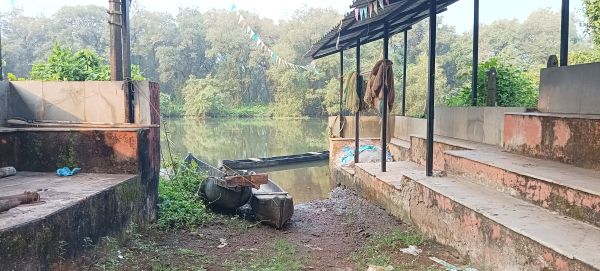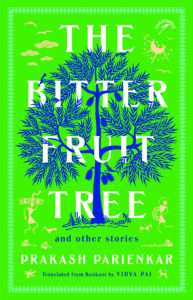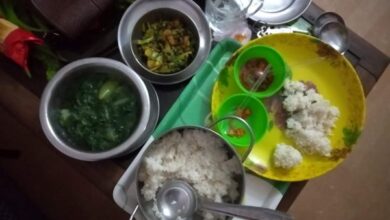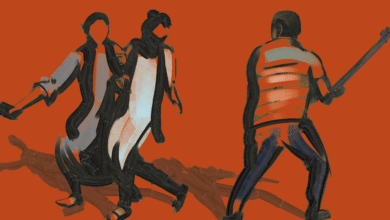Invisible beings & the bitter, sweet symphony of their lives
In the simplicity of Prakash Parienkar's collection of short stories lies a deep understanding of human life and emotions

 There is a bigger picture, and there are those fine strokes on the canvas that often go unnoticed. But if one looks closely, with more compassion than cynicism, then one may realise how these inconspicuous strokes are building the character of the bigger picture. And yet, they are lost in individuality.
There is a bigger picture, and there are those fine strokes on the canvas that often go unnoticed. But if one looks closely, with more compassion than cynicism, then one may realise how these inconspicuous strokes are building the character of the bigger picture. And yet, they are lost in individuality.
The Bitter Fruit Tree by Sahitya Akademi Award-winning writer Prakash Parienkar is a canvas that gives space to the lost individuality. It is a collection of withered leaves from the lives of Tilgos, Phatlems, Avdus, and Goklems — the invisible people who live and die unnoticed, and dissolve into the bigger picture.
Originally written in Konkani, the book has been translated by Vidya Pai. The 13 tales are set in the rural backdrop of Sattari, a forested region in northeast Goa in the foothills of the Western Ghats. Through delineated characters and their struggles, the author portrays the socio-economic hierarchy in these Goan villages and the geographical adversities.
Tilgo was born and brought up in the village, and yet, when the time came to bury his wife, no affluent upper caste villagers came forward to donate a piece of land to bury her. All he got was a bitter fruit tree across the river that bordered the village and the forest. Tilgo had to carry his dead wife on his shoulders to bury her memories under the massive tree, the shade of which “is so sweet”.
The ignominy that the living and the dead suffer is inexplicable. When society outcasts Tilgo, nature embraces him, and the forest honours the dead. The original story, Kaajro, was first published in 2021.
It is this forest that is so intrinsically connected with the lives of many in this part of Goa. Many, like Avdu, may have felt the pain of separation when tagged as encroachers by government machinery and evicted.
 Avdu refuses to leave the forest that has become more than a source of daily sustenance; it is her life. Her house on the edge of the forest is suddenly an illegal possession, and she must make way for the Abhayaranya (reserve forest). “Tell me, can we leave all this behind…?” Avdu fails to understand how everything that is her identity becomes non-existent one day. Does the forest even understand its changing identity in this modern world?
Avdu refuses to leave the forest that has become more than a source of daily sustenance; it is her life. Her house on the edge of the forest is suddenly an illegal possession, and she must make way for the Abhayaranya (reserve forest). “Tell me, can we leave all this behind…?” Avdu fails to understand how everything that is her identity becomes non-existent one day. Does the forest even understand its changing identity in this modern world?
The Konkani story, Abhayaranya, was published in 2008.
Nature nurtures life in the foothills of the Western Ghats. The abundance of flora and fauna provides a source of livelihood to the people who coexist with her. But her fury is devastating, and that is the brutal truth that villagers are aware of, and yet every destruction leaves behind agony and despair. So, when unseasonal rain destroyed the puran (a method of farming practised in this part of the country) field of Phati and Phatlem, they were silenced by the roaring thunder. Sleep eluded the couple on the fateful night, and dreams of a good harvest withered in front of their eyes.
Kajarphal, the original story, was published in 1996.
Parienkar’s stories are not only about the goenkars (the locals of Goa) but also the outsiders (who are called ghatis, or people from the Western Ghats). These people are mysterious and mischievous. They are diabolical to those who do not understand their way of life. These migrants come to Goan villages to trap otters. Hostility towards them is just a minor mistake away, and when it is sparked, the survival of the ghatis is threatened. The entire community’s existence is trapped in an indigenous device that is their livelihood, and in no way can they part with it.
Ani tey pot ghevn gelle, the Konkani version of The Trap, was published in 1996.
Beyond the struggles, Parienkar writes about headstrong women who make decisions and who dare to swim against the flow. His characters, Chandre in The Crescent Moon, and Goklem in Water, are not overwhelmed by the rigorous social construct and populist ideas. They are independent women who think for themselves. So, when Chandre frees the man captivated by the villagers, she feels right. When Goklem decides to reconstruct the lost well in her village, it shows her determination that no man in her village dares to even think of.
Parienkar’s stories are the reflections of the daily drudgery of rural life, narrated lucidly without any ornamentation. And yet in this simplicity lies a deep understanding of human life and emotions. His portrayal of the rural characters reminds one of Syed Mustafa Siraz or Azizul Haque, whose stories are set in Bengal villages.
Parienkar’s Goklem, Tilgo, Avdu, Dhamu, Chandre, Phati and Phatlem may be nondescript on the canvas, but they make up the bigger picture. Through them, the author depicts the social malaise that needs a vent, the travesty of justice that needs correction and a system of governance that needs to connect to the roots.
Book: The Bitter Fruit Tree and Other Short Stories; Author: Prakash Parienkar; Translator: Vidya Pai; Publisher: Niyogi Books; Pages: 190; Price: Rs 350





